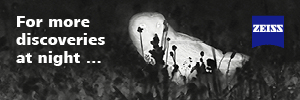Includes Ngami Owlet; Scheffler's Owlet, Chestnut Owlet
- Glaucidium capense
Identification
A small owl which reaches a maximum size of 22cm (8¾ in). No ear tufts. The females are larger, but otherwise the sexes are similar.
- Chestnut brown
- White spotted upperparts and head
- Buff underparts
- Pale face mask
- Yellow iris
- Feathered feet
Distribution
Southern half of Africa
Western Africa: Democratic Republic of Congo, Liberia, Ivory Coast, Ghana, Cameroon and DRC
Eastern Africa: Kenya, Zambia, Mozambique, Malawi and Uganda
Southern Africa: Namibia, Botswana, Zimbabwe, South Africa, Western Cape, Eastern Cape, KwaZulu-Natal, eSwatini
Taxonomy
Some authorities place this species in genus Taenioglaux.
Subspecies
This is a polytypic species consisting of three[1] to five subspecies[2]:
- G. c. scheffleri:
- G. c. ngamiense:
- Central Tanzania to eastern Zaire, Angola, Mozambique and Mafia Island
- G. c. capense:
- Southern Mozambique to Natal and eastern Cape Province
- G. c. etchecopari:
- Patchily distributed in Liberia and Ivory Coast
- G. c. castaneum:
Several of the above have been split into full species by some authorities
Habitat
Woodland and forests, and on forest edges, more open savannah and along rivers.
Behaviour
It is partly diurnal.
Diet
The diet includes insects such as beetles, grasshoppers and caterpillars, as well as small birds, mammals and reptiles.
References
- Clements, J. F., T. S. Schulenberg, M. J. Iliff, D. Roberson, T. A. Fredericks, B. L. Sullivan, and C. L. Wood. 2018. The eBird/Clements checklist of birds of the world: v2018. Downloaded from http://www.birds.cornell.edu/clementschecklist/download/
- Avibase
- König, C. and F. Weick 2008. Owls of the World, second edition. Christopher Helm, London. ISBN 978-0-7136-6548-2
Recommended Citation
- BirdForum Opus contributors. (2024) African Barred Owlet. In: BirdForum, the forum for wild birds and birding. Retrieved 4 May 2024 from https://www.birdforum.net/opus/African_Barred_Owlet
External Links
GSearch checked for 2020 platform.1





